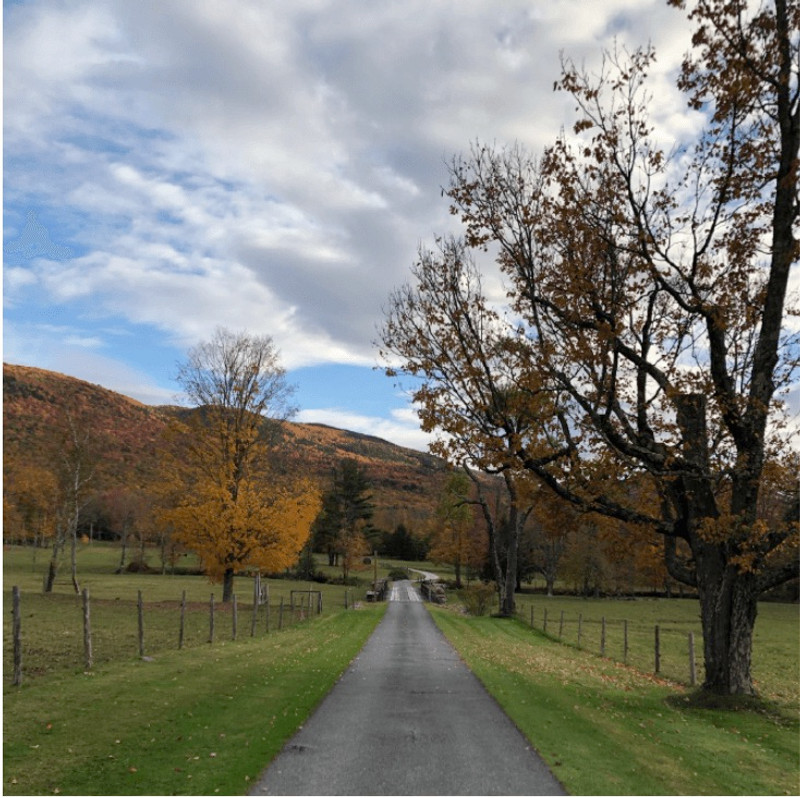Shoulder seasons are a great time to think about starting or expanding your mushroom log family. Trees have fallen into dormancy, but leaves are still on the trees which can help with tree identification, ensuring you choose the best tree species for the mushroom you plan on growing.

Wood Harvest for Mushroom Logs
Why does inoculation usually take place in either fall or spring? Fall and spring are good times to view a stand of trees critically to visualize which trees need to be removed because they are suppressed by or are suppressing their neighbors. These trees can be harvested and inoculated if your day time temperatures hang around 50°F or more for a few weeks after inoculation. If your locale is usually a snowy place in the winter, you can also cut trees in fall and store in a protected, shady place until inoculation in early spring. Growers in warmer locations that get just a little snow can cut and inoculate all fall and winter long!
While all of the above are important factors in choosing logs, the biggest thing to consider when harvesting logs is whether or not the tree is in dormancy.
Tree Dormancy: What and When is it?
An easy way to explain Dormancy is simply hibernation for trees. Dormancy minimizes a plant's interactions with the external environment when the temperatures drop into harsh conditions. Plants protect themselves by taking actions such as tightly closing buds to shield them from the killing cold and protect wood vessels from frost cracking. Trees go into dormancy in the fall of the year and early dormancy is visible by the first blushes of leaf color. Usually once one third of the canopy has changed color it signals dormancy. This is a sign that all the interactive functions in the tree have shut down and it is now safe to cut the tree for mushroom wood. Dormancy lasts until the weather warms enough to signal that nutrients can leave the sapwood to form twigs and leaves in the spring of the year. Once the buds on twigs start to swell and break the tree is no longer in dormancy and we no longer consider it a good time to cut logs.
Why does dormancy matter for Shiitake cultivation?
During dormancy, transport of nutrition necessary for springtime growth has slowed and sugars are stored safely in the sapwood of the tree, making the wood a perfect food source for the hungry mushroom mycelium. During early dormancy wood cells are soft and easily penetrated by the mycelium. Once the shiitake mycelium establishes itself and temperatures drop below 40° F, the mycelium will slow its growth and be protected in the wood structures throughout the winter months. To inoculate in mushroom logs in the fall of the year you will want 3-5 weeks of daytime highs above 50°F for the mushroom mycelium to safely establish itself in the wood to weather the upcoming winter. Areas where the winter temps are usually above 40° F during the day can expect to have some fungal growth throughout the winter.
Walking the Fine Line of Temperature Swing in the North
In the north we walk a fine line in the fall of the year between when dormancy hits to when the temperatures drop below that required 40° F. If you hit the timing on the head you can cut in early October and still inoculate within the temperature parameters. However, more often than not folks will cut their logs and the temperatures drop. At this point you can either store the logs until the Spring of the year or you can inoculate and incubate the logs indoors. If this is a method you're interested in we highly recommend you read the blog Can I Inoculate Mushroom Logs in Fall? which covers the guidelines you'll need to follow for a successful crop.
What most people in the north tend to do is to cut logs in late February or early March before the trees leave dormancy, let the logs sit in a protected location for several weeks, and then inoculate the logs once temperatures are regularly in the 40s. There are several options - choose what works best for your locations and your schedule!
2. Hold the logs outdoors in a protected area, say, north side of a building or in a protected spot in the woods. Stack the logs low so they can be covered by snow. Inoculate these as soon as the earth starts to thaw in the spring.

